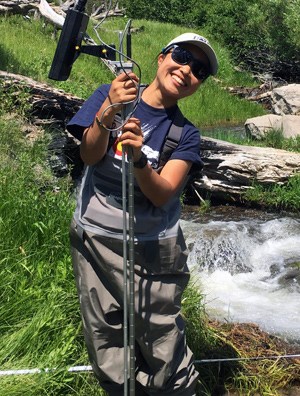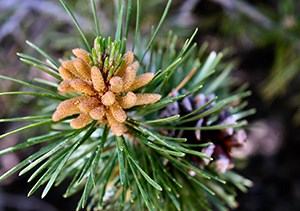Last updated: September 20, 2017
Article
What’s Blooming in the Cold Air Pool?
by Future Park Leaders of Emerging Change intern Sophia Chau, Michigan State University

During my summer internship I linked plant phenology to temperature at Devils Postpile National Monument to inform efforts to manage the monument as a potential climate change refuge. My supervisor, Monica Buhler, and other interns joined me in the field to monitor phenology in and out of the cold air pool. Our team also downloaded temperature data from iButtons, monitors the size of a thumbnail.

My internship allowed me to experience firsthand how science can inform natural resource management, particularly climate change adaptation strategies, and vice versa. I am so grateful to everyone at Devils Postpile for their support and providing me with the opportunity to work and learn in a beautiful landscape!
Learn more about the Future Park Leader of Emerging Change (FPL) program.
